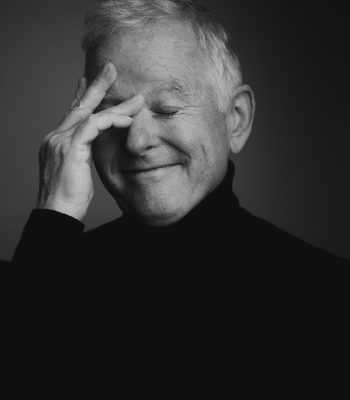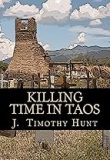Author Interview: J. Timothy Hunt

The books shown on the left are by J. Timothy Hunt. Click on the cover to order.
This interview was conducted by Daniel Ryan Johnson on June 10, 2025.
Daniel Ryan Johnson: What was the initial idea that ended up expanding into this novel?
J. Timothy Hunt: A long time ago, I had a casual acquaintance whom I saw every now and then. He was quite a storyteller, regaling everyone with amazing anecdotes from his life. I ran into him once at an event, and he told me a humorous story about some dumb guy doing some dumb thing, and when he had gotten about two-thirds of the way into the tale it suddenly dawned on me – he was telling me a story about ME. I was stunned because what had actually happened wasn’t nearly as bad as he was telling it. He had embroidered the story so much that he had forgotten whom the story was even about, and here he was telling it to my face without a clue that I was the person he was talking about. In that moment, I realized that (perhaps? probably? certainly?) he was a pathological liar. Everything he had ever told me had been false. The protagonist of my book, Cary Scott, is not a pathological liar. He truly believes what he is saying, but like my former acquaintance, his stories (perhaps? probably? certainly?) could be untrue.
Daniel Ryan Johnson: The book takes a deep look at psychological disorders and trauma. Do you have a background in psychology?
J. Timothy Hunt: I’m married to a psychiatrist, and I’ve been in therapy for 40 years, so I kinda know how the game is played. Plus, I did do a lot of deep research into false memory syndrome. The manner in which the syndrome is portrayed in the book is fairly accurate.
Daniel Ryan Johnson: The book is mostly set from the 1960’s through the 90’s. What made you choose this time period?
J. Timothy Hunt: I am a man of a certain age. It is probably no coincidence that the time periods of Cary Scott’s life exactly mirror my own.
Daniel Ryan Johnson: Do you have a personal connection with Southern California or was there another reason you chose to set the majority of the book there?
J. Timothy Hunt: As a writer, you go with what you know. I was born in Los Angeles in 1959 and lived in Southern California through the 1970s. I spent the ‘80s and ‘90s in New York City. I know both of these places and time periods intimately. Oh! And I was actually an artist at the Wurlitzer Foundation in Taos, NM. Some of Cary’s humiliation is based on an unfortunate artist who previously occupied my little adobe house there. I happened to ask the head of the foundation one day, “Why is floor under my toilet so heavily reinforced?” His answer was disturbing.
Daniel Ryan Johnson: When writing, do you carefully plan out everything before you begin or simply take an idea and start to stretch it out into a story on the page as you go?
J. Timothy Hunt: Normally, I spend an exhaustive amount of time on the architecture of what I’m writing. All the bones are in place before I start fleshing everything out. In the case of “The Museum of Lies” – to use a less disturbing metaphor – it was more like a kaleidoscope that, in a moment of epiphany, resolved itself into a beautiful mosaic. For quite a while I didn’t know where I was going until the story slapped me in the face.
Daniel Ryan Johnson: Do you have a favorite chapter from Cary’s life story?
J. Timothy Hunt: Oh my poor Cary Scott! I love him and care for him so deeply, but I have to admit I felt a perverse glee when I had him literally crucify himself with hammer and nails to get out of gym class.
Daniel Ryan Johnson: Which chapter did you find most difficult to write?
J. Timothy Hunt: The chapter in which 10-year-old Cary is tormented by a pedophile was the hardest thing I’ve ever written my life. I knew I couldn’t be coy or tasteful in this section. It had to be brutal in its explicit second-by-second detail. It had to feel nauseatingly TRUE. Writing that chapter was as traumatizing me for me as it was for the character.
Daniel Ryan Johnson: Were there any books or writers that heavily influenced you in telling this story?
J. Timothy Hunt: Yes! Dickens’s “David Copperfield” – and by extension, Barbara Kingsolver’s brilliant homage, “Demon Copperhead.”
Daniel Ryan Johnson: Did you write the story in the order it appears, or did you write linearly and order the chapters later?
J. Timothy Hunt: I have been a continuity supervisor for film and television for many years. I’m used to working on screenplays that are told “out of temporal continuity,” or jumping back and forth in time. Starting at the beginning isn’t always the best way to tell a story. Sometimes you need to start big, back it up a little bit, go big again, back it up a little bit, go big again … It doesn’t work for every story, but when used properly, it creates a lot of juicy tension.
Daniel Ryan Johnson: Have you considered building your own museum of memories (or lies)?
J. Timothy Hunt: Absolutely NOT. I am whatever you’d call the opposite of a hoarder. I’d be happy to walk away from all my personal possessions in a heartbeat. I find the whole “Swedish Death Cleaning” movement deeply appealing. In fact, I might even start it tomorrow. Do you need some stuff? Come. Take whatever you want.
Daniel Ryan Johnson: Thank you for taking the time to do this interview with me.
Ⓒ 2022 BestSellersWorld.com | All Rights Reserved | Design + Development by The Unglitch


